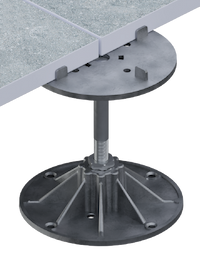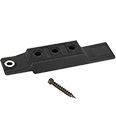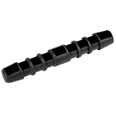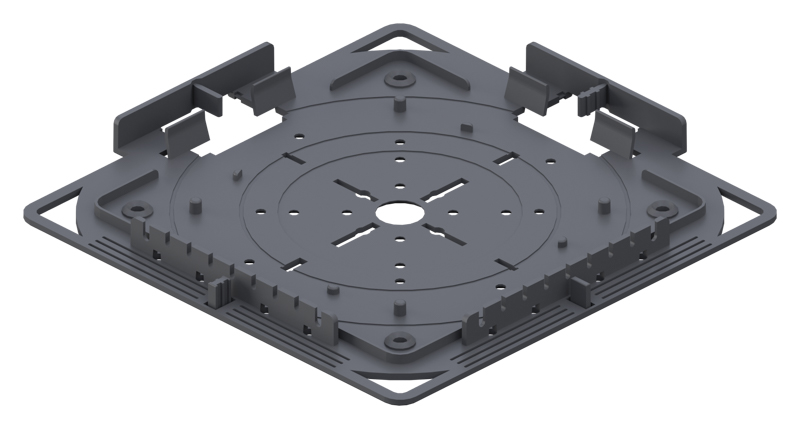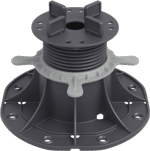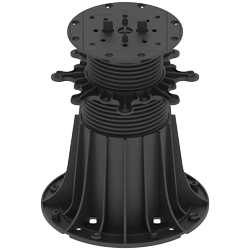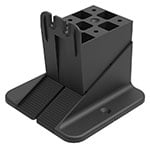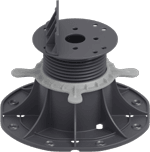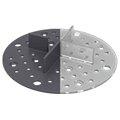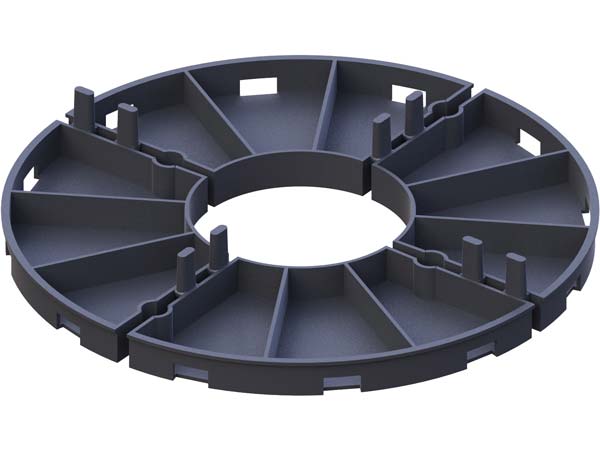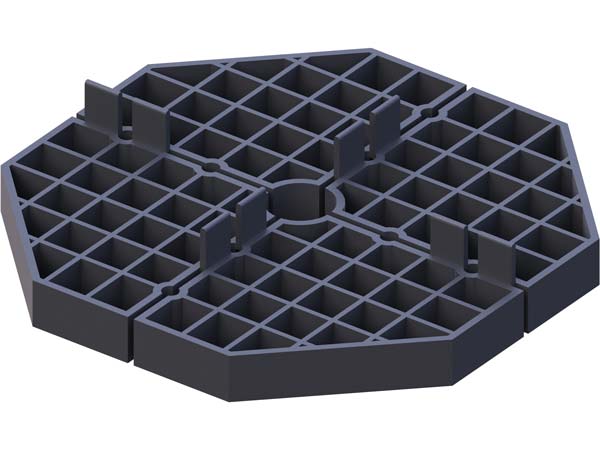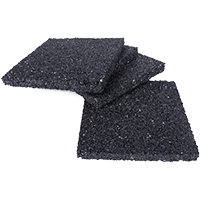Rubber protective pads are used for:
- Protecting the substrate on which the pedestals are placed. Typically, this is a delicate waterproofing layer that could vulcanize with the base of the terrace pedestal over time or be damaged due to the pressure exerted by the pedestal. We recommend using protective pads under the pedestals for delicate waterproofing membranes that may be susceptible to damage.
- Leveling irregularities beneath the pedestal. Often, the surface on which adjustable pedestals for building elevated terraces are installed may have irregularities that are best leveled with SBR rubber protective pads. Rubber pads can be trimmed with a knife to any size and shape to ensure optimal leveling of the substrate beneath the pedestal.
- Providing acoustic insulation for spaces beneath the terrace. If the adjustable pedestal is placed on a ceiling beneath which there are occupied spaces without proper acoustic insulation, the sounds of walking on the terrace may be transmitted. Using rubber protective pads can improve the acoustic insulation.
- Preventing minor cracking noises that may occur when pedestals are placed on hard surfaces like concrete screed. By using rubber protective pads, the occurrence of unwanted noises associated with the use of the terrace can be effectively prevented. For enhanced acoustic comfort, in addition to using pads under the pedestals, we also recommend using rubber pads between the pedestal head and the terrace paver.
Presented information is for general information and is a set of good practices. They cannot be the basis for claims or warranties against the manufacturer.




